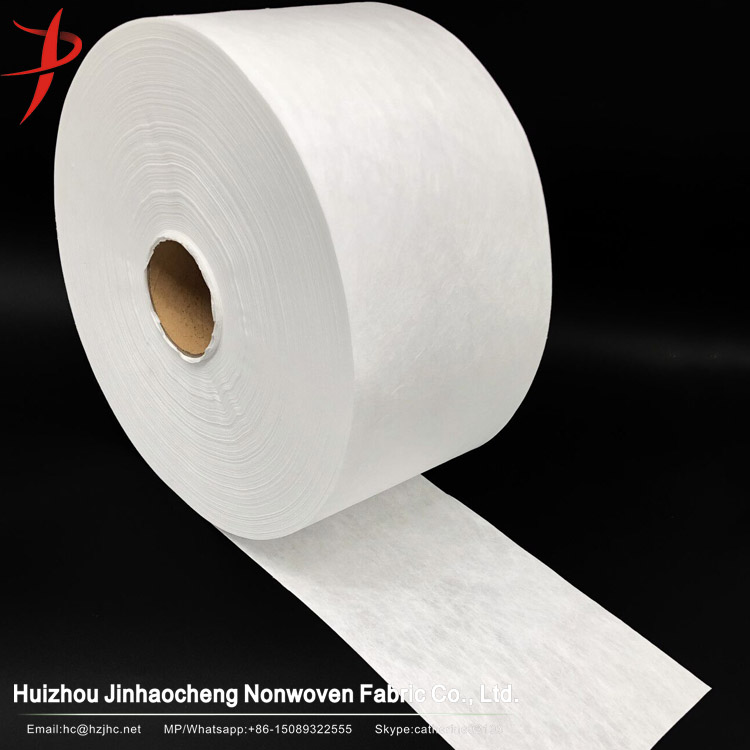What are the material science reasons behind the use of different types of masks?Extending further to personal protective equipment (PPE), what special polymer materials and manufacturing processes are involved?
What material are masks made of?
Why is there such a big difference between different masks?When I was writing, I cut open a four-layer activated charcoal mask commonly used in the laboratory to find out what it is like inside:
As we can see, the mask is divided into four layers. The outermost two layers are two cloth-like materials, the black layer is activated carbon, and the other one is dense, which is a little like napkin.Small make up after looking up some data to understand, in addition to the middle of the activated carbon layer, the other three layers are a kind of material called non-woven fabric.Non-woven Fabric (English name: non-woven Fabric or Nonwoven cloth) is also called Nonwoven Fabric, which is made of directed or random fibers.It is called cloth because of its appearance and certain properties.
There are many kinds of manufacturing processes for non-woven fabrics, including spunbonded process, melting spray process, hot rolling process, spuning process and so on.The raw fibers that can be used are mainly polypropylene (PP) and polyester (PET).In addition, there are nylon (PA), viscose fiber, acrylic fiber, polypropylene fiber (HDPE), PVC, etc.
At present, most non-woven fabrics are produced by spunbonded method in the market. This method forms continuous filament by extruding and stretching the polymer, then the filament is laid into a net, and the fiber net is then bonded by itself, thermal bonding, chemical bonding or mechanical reinforcement, so that the fiber net becomes non-woven.Spunbonded non-woven fabrics are easy to identify. Generally, the rolling point of spunbonded non-woven fabrics is diamond shaped.
Another common non-woven manufacturing process is called needling non-woven fabric. The manufacturing principle is to repeatedly puncture the fiber net with the barbed edges and edges of the triangle section (or other sections).When the barb passes through the network, it forces the surface and local inner layer of the network into the network.Due to the friction between the fibers, the original fluffy network is compressed.As the needle exits the net, the strands are left behind by the barbs, so that many of the strands become entangled in the net and cannot return to their original fluffy state.After many times of needling, quite a lot of fiber bundles are punctured into the fiber net, and the fibers in the net become entangled with each other, thus forming the needling nonwoven material with certain strength and thickness.
But the pores of the two non-woven fabrics are too large for medical purposes to isolate viruses at around 100nm.
Therefore, the intermediate layer of the general surgical mask is made of non-woven cloth by melting spray.The production of melt-spraying non-woven cloth is firstly to put the polymer masterbatch (generally polypropylene) into the extruder and melt it in the extruder at a temperature of about 240℃ (for PP).The melt passes through the metering pump and reaches the injection mold head.When the newly formed polymer is extruded from the spinneret, the end of the compressed air ACTS on the polymer and draws the hot filament to 1~10 m in diameter at an air velocity higher than sound (550m/s). According to its physical properties, such a net is called a microfiber net.These ultrafine fibers with unique capillarity increase the number and surface area of fibers per unit area, thus making the melt-sprayed fabrics have good filtration, shielding, insulation and oil absorption properties.It can be used in air, liquid filtration material, isolation material, mask material and other fields.
The filtering mechanism of medical mask is Brownian diffusion, interception, inertial collision, gravity settlement and electrostatic adsorption.The first four are all physical factors, which are the natural characteristics of non-woven fabrics produced by melting spray. The filtering property is about 35%.This is not up to the requirements of medical mask. We need to conduct stationary treatment on the material, make the fiber carry electric charge, and use electrostatic to capture the aerosol that the novel Coronavirus is in.
Novel Coronavirus aerosol (aerosol) was captured by novel coronavirus adsorption through coulomb force of charged fiber.Principle is to make the filtering material surface is more open, the particles can capture ability is strong, and the charge density increases, the adsorption of particles and the polarization effect is stronger, so the filter layer of melt-blown non-woven filter material, have to pass to deal with, can not change under the premise of respiratory resistance, achieve 95% filterability, to be effective against the virus.
After some research, I have a general understanding of the composition of the mask in my hand: the outer layer is made of needle-punched non-woven cloth made of PP, and the interlayer is an activated carbon layer and a PP melt spray cloth layer.
Post time: Aug-29-2020

